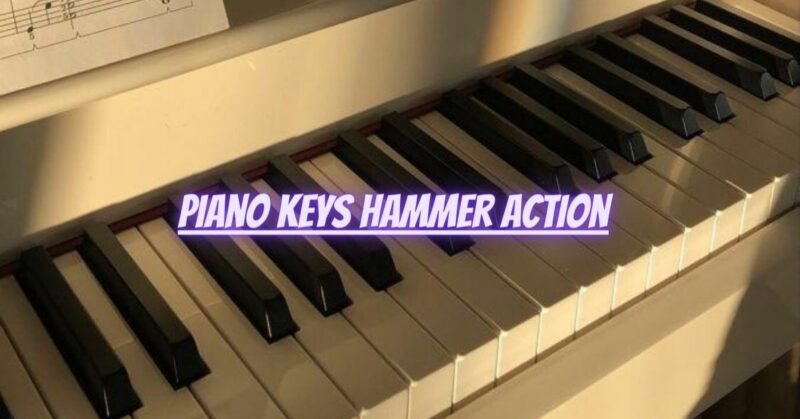The piano keys hammer action is a fascinating mechanical marvel that lies at the heart of acoustic pianos. It is a sophisticated system that enables the pianist to control the intensity and articulation of the sound produced by striking the strings. The hammer action is a vital component that distinguishes the piano from other keyboard instruments, and it plays a crucial role in shaping the touch, dynamics, and resonance of the instrument. In this article, we will delve into the significance of piano keys hammer action, its mechanism, and its impact on the art of piano playing.
1. Understanding Piano Keys Hammer Action:
The hammer action is the mechanism that translates the pianist’s keystrokes into the striking of the piano strings. When a pianist presses a key, a series of levers, springs, and hammers work in concert to transfer the motion from the key to the corresponding hammer. The hammer then strikes the strings, setting them into vibration, and producing the sound that resonates through the piano.
2. Types of Piano Keys Hammer Action:
a. Upright Pianos:
- Vertical Action (Direct Blow Action): Found in most upright pianos, the vertical action connects the key directly to the hammer, allowing for a relatively direct transfer of motion and quick repetition of notes.
- Drop Action (Overdamper Action): In drop action upright pianos, the hammers fall back from the strings after striking, and the dampers rest on the strings to stop the sound.
b. Grand Pianos:
- Horizontal Action (Repetition Action): Grand pianos feature a horizontal action, where the hammers are aligned in a horizontal row and connect to the keys through a complex system of levers and repetition springs. This action enables faster repetition of notes and greater control over the dynamics.
3. Impact on Piano Playing:
The piano keys hammer action significantly influences a pianist’s playing experience and musical expression:
a. Touch and Dynamics: The responsiveness of the hammer action allows pianists to control the touch and dynamics of their playing. Light touches produce soft notes, while stronger keystrokes create more powerful sounds.
b. Articulation and Artistry: The hammer action enables pianists to articulate their playing with precision and clarity. It provides the ability to shape notes and phrases, adding depth and emotion to the music.
c. Resonance and Tone: The hammer action contributes to the production of a rich and resonant tone. The hammers striking the strings create the characteristic sound of the piano, enhancing its versatility and expressive potential.
4. Maintenance and Regulation:
Proper maintenance and regulation of the piano keys hammer action are essential to ensure the instrument’s optimal performance. Regular tuning, adjustment, and voicing of the hammers help maintain the desired touch and tone of the piano.
5. The Art of Piano Playing:
Mastering the piano keys hammer action is a lifelong pursuit for pianists. It requires developing finger strength, control, and sensitivity to achieve a nuanced and expressive touch.
Conclusion:
The piano keys hammer action lies at the core of the piano’s expressive capabilities, infusing the instrument with life, personality, and musicality. It is through this intricate mechanism that pianists connect with the soul of the piano and create an enchanting world of sound and emotion. Embrace the magic of piano keys hammer action, and with every keystroke, let your music reverberate with the brilliance and resonance that only a piano can provide. Happy playing!


